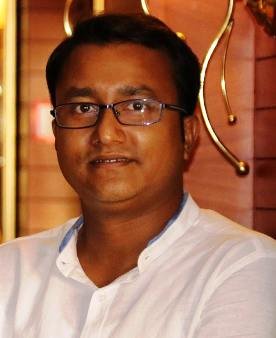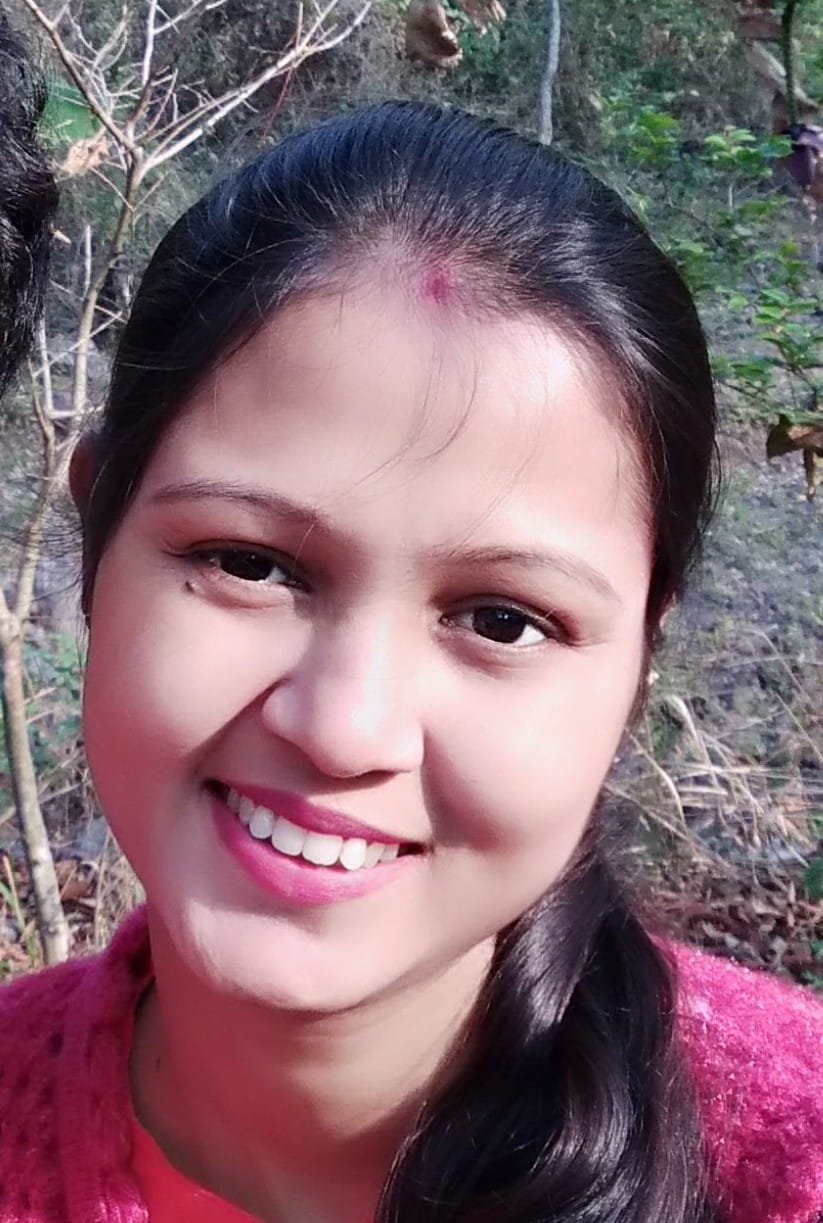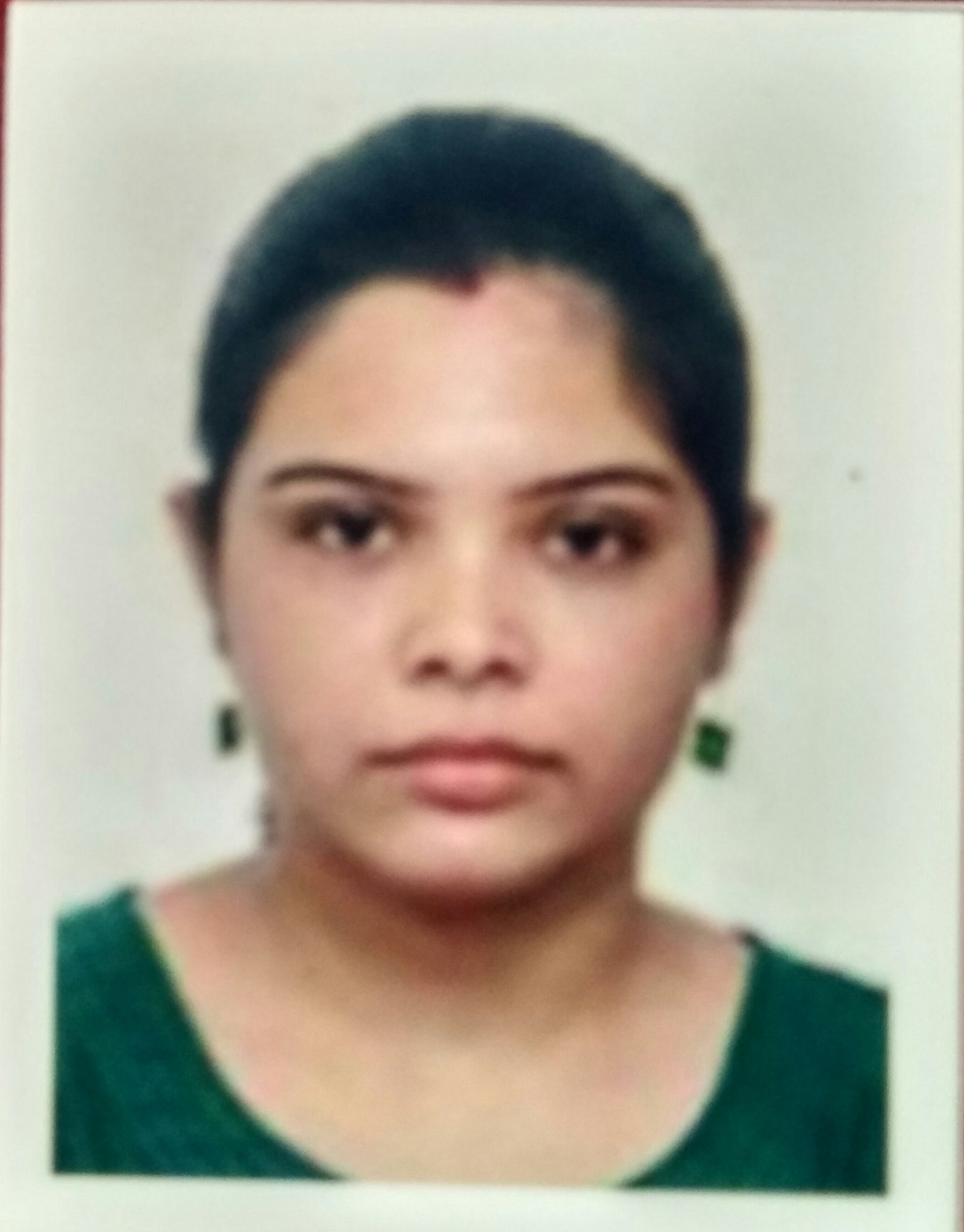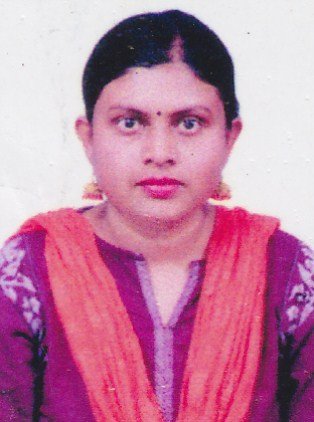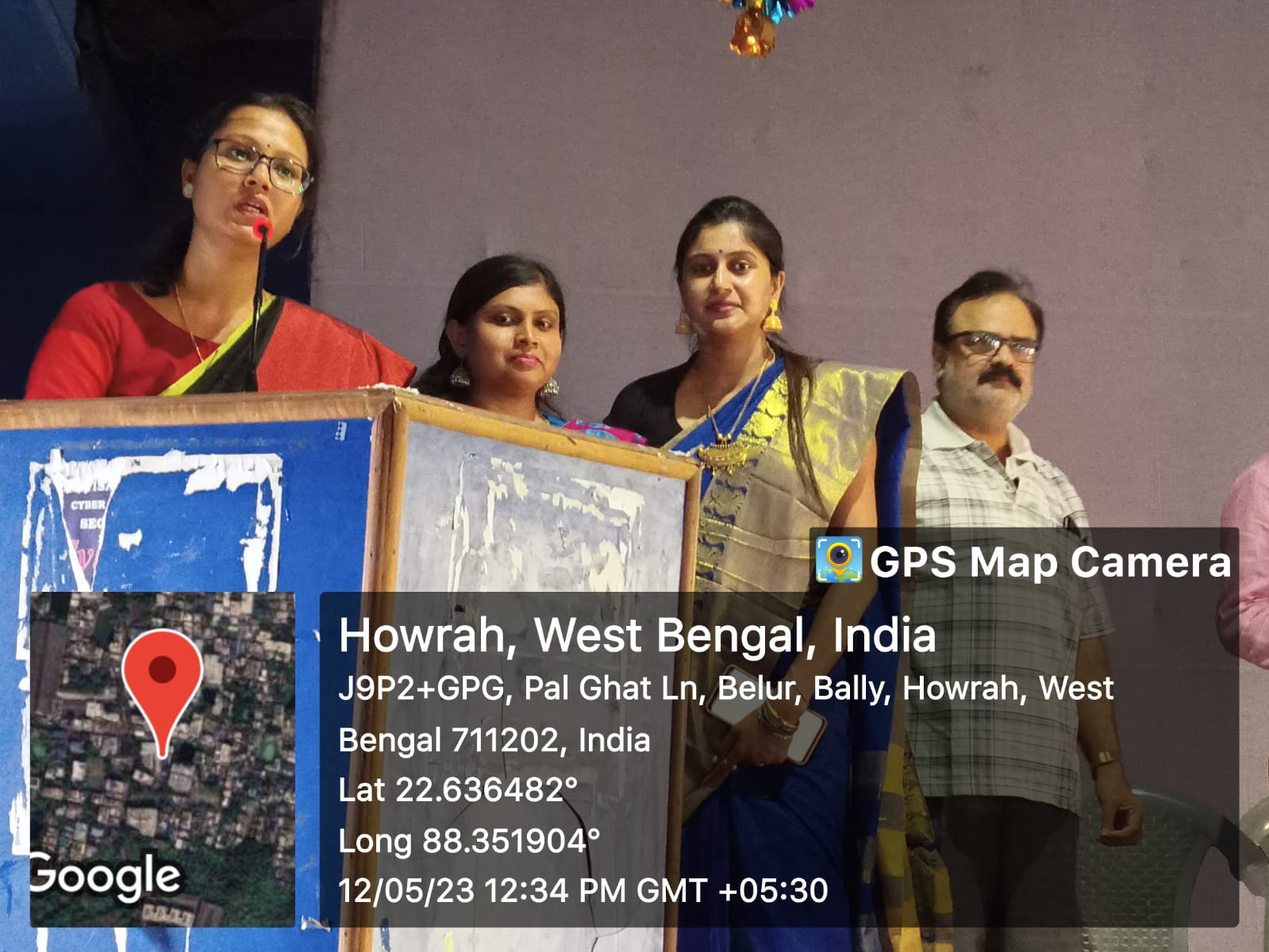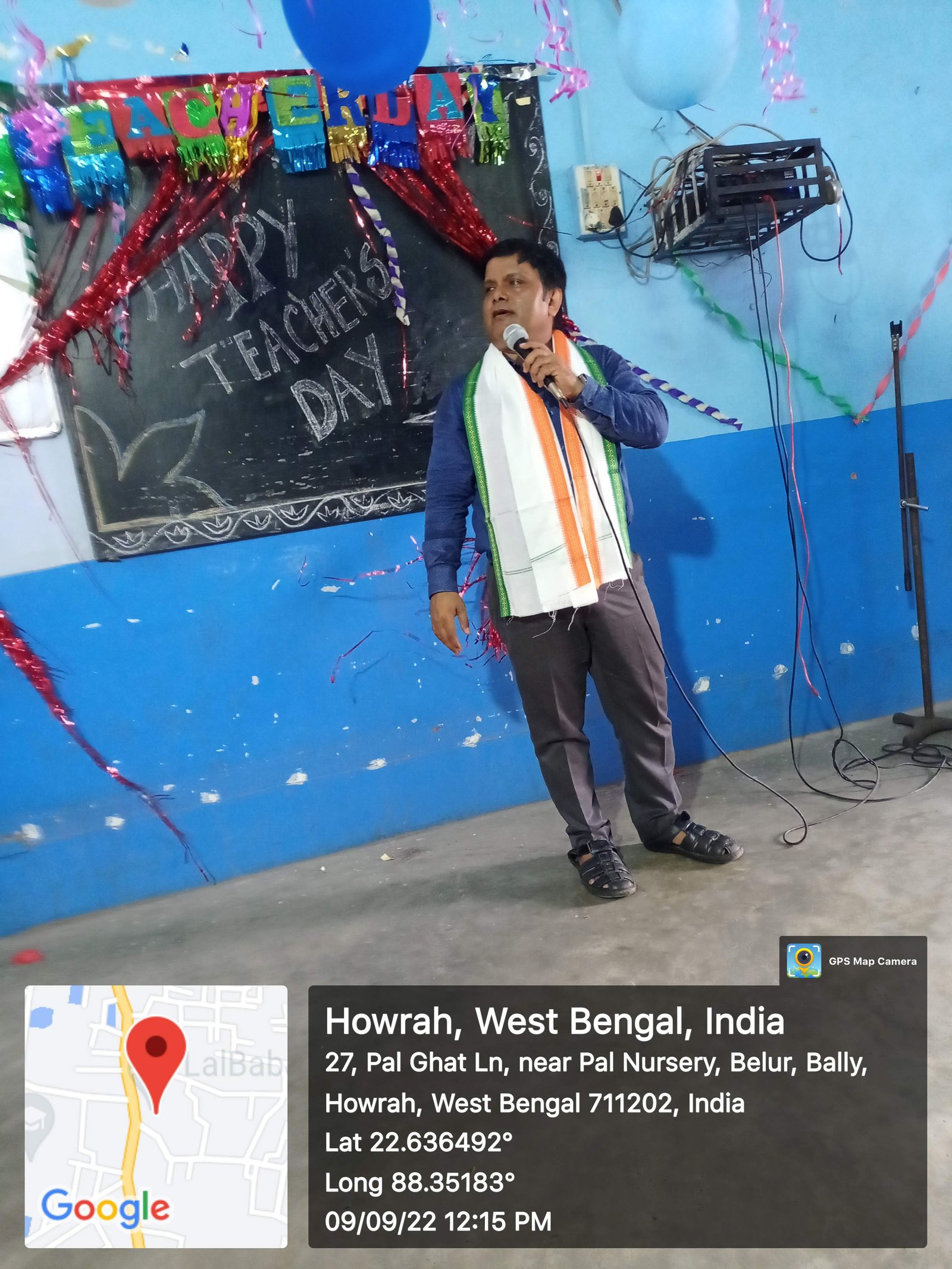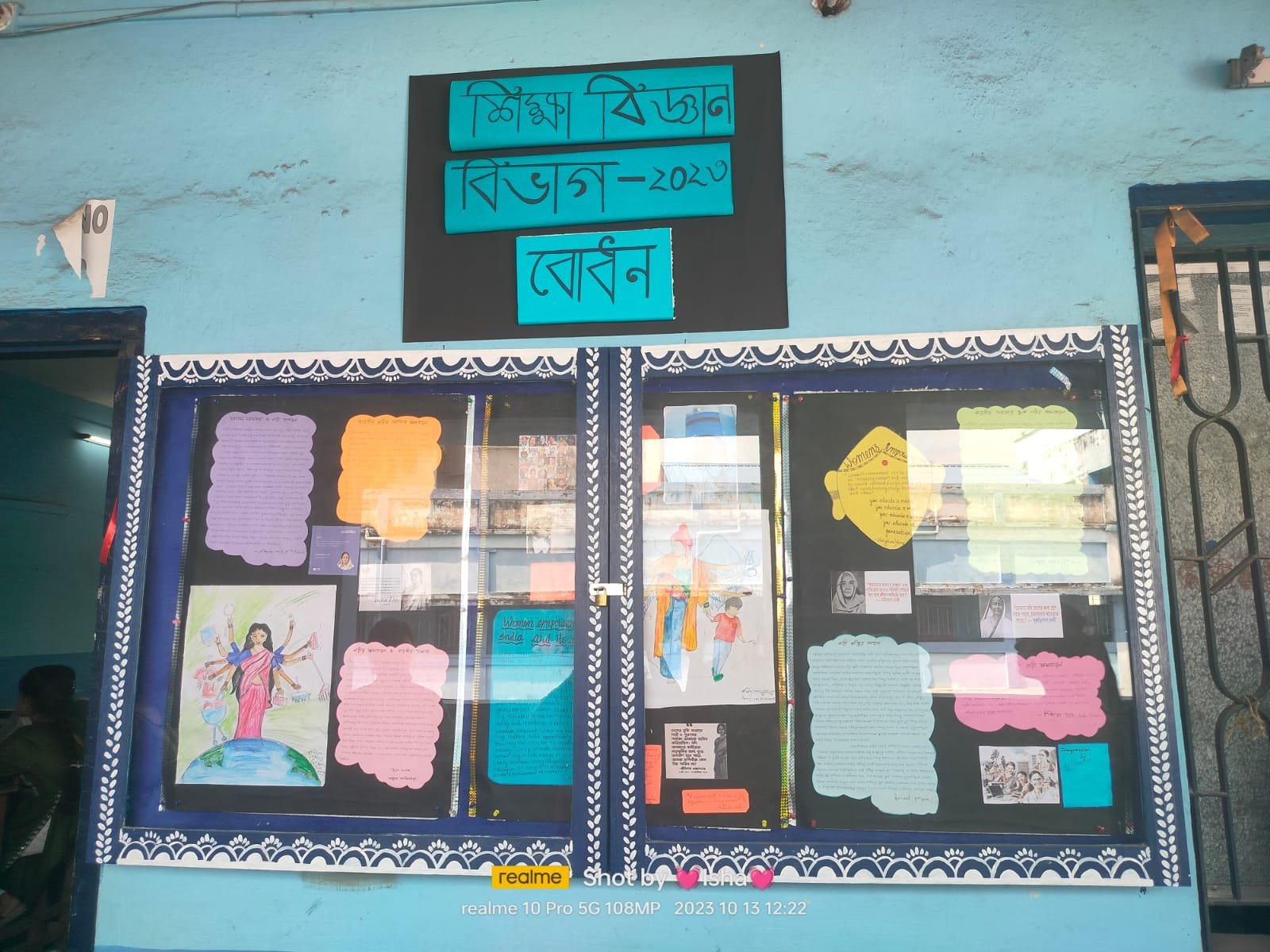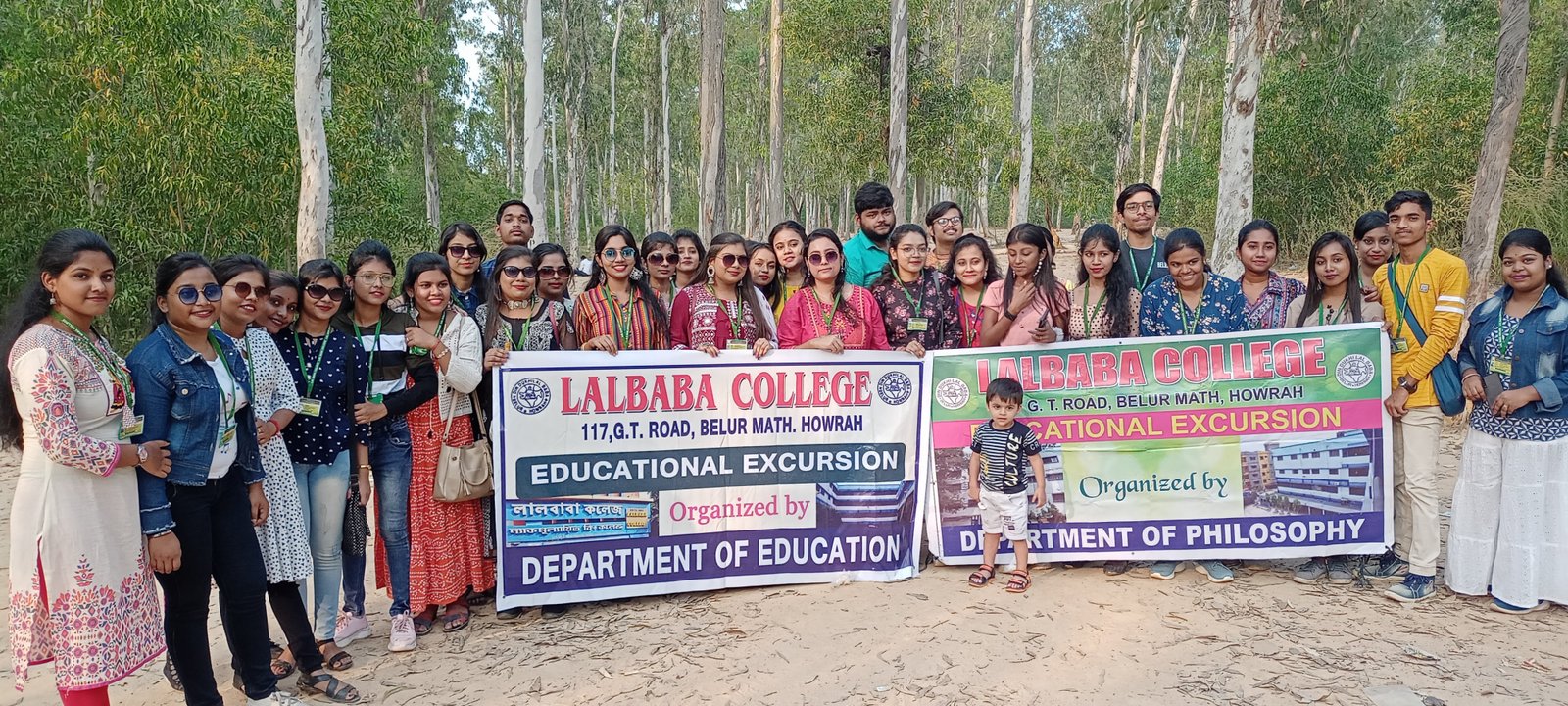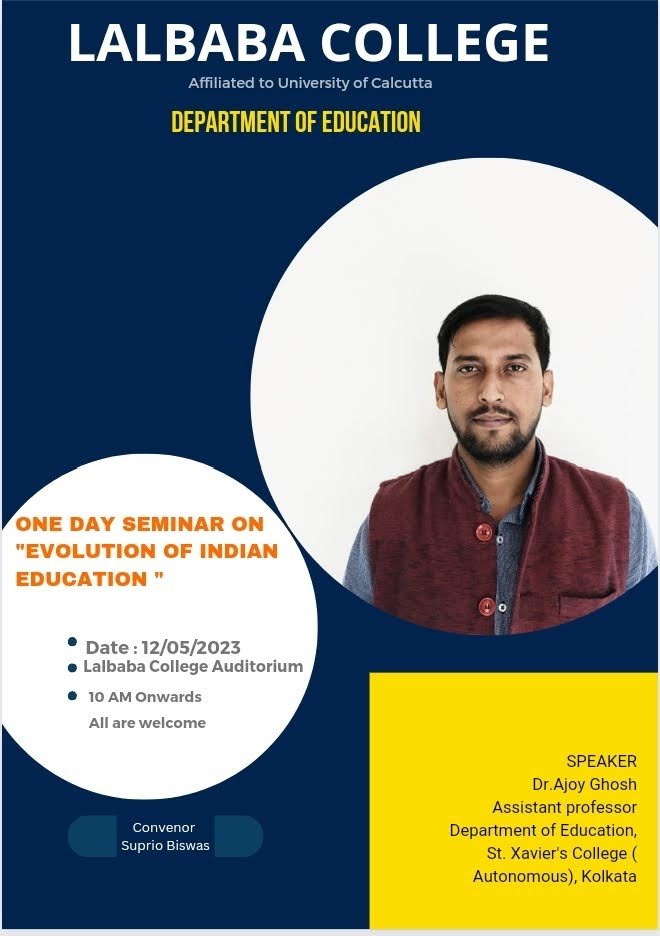Department of Education

Sri Biswajit Goswami, M.A., M.Ed., PGDGC, M.Phil
State Aided College Teacher, Category-II
View ProfileDepartment of Education
BRIEF HISTORY
Our
College is established in 1964 to provide quality education at the
undergraduate level to the neighborhood students, Irrespective of caste,
class, creed, religious affiliation or gender, it aims at providing generous
scope for higher education to the local youth. The Department of Education is
into effect since inception of the college with the mission to deliver pursuit
of knowledge through participation in academic and extracurricular activities
and developing strong personal values.
The Department started its journey in
1964 by Dr.. Kalpana Sen Barat , a
renowned teacher and marvelous orator. She also had authored a number of books
in Education which are still of high demand.
Later the College felt the need of introducing
Honours course and inspire of shortage of teachers and infrastructural
facilities, to fulfill the needs of the local community it was introduced on
2015 in the morning section of the college.
Presently the
department is successfully providing quality education to 25 Honours students
and more than 300 General students per year under the guidance of six
departmental subject teachers with the support of other college officials.
| Sl No | Title | Meeting Notice View |
|---|
| Sl No | Title | Meeting Minutes View |
|---|
| Sl No | Title | Annual Report View |
|---|
| Sl No | Date | Title | View |
|---|
| Sl No | Name | Phone No | Email Id | Progress |
|---|
DEPARTMENTAL MAIL ID
education.lalbabacollege@gmail.com

